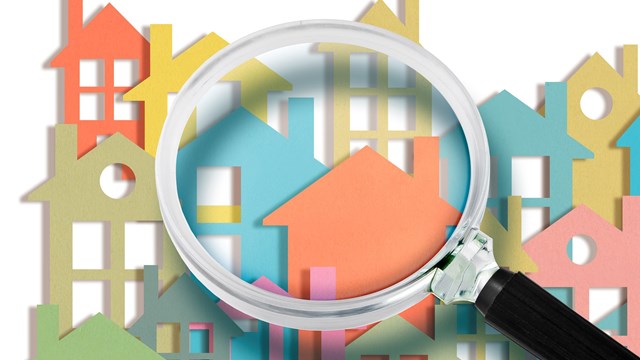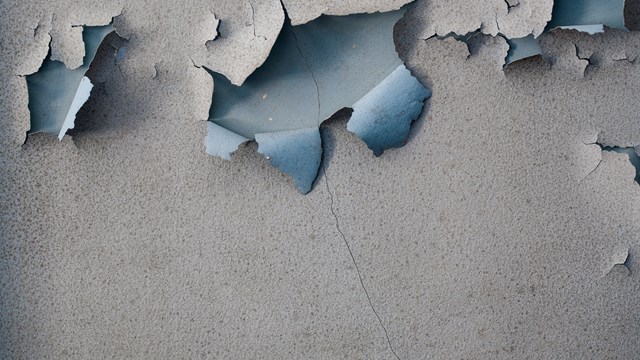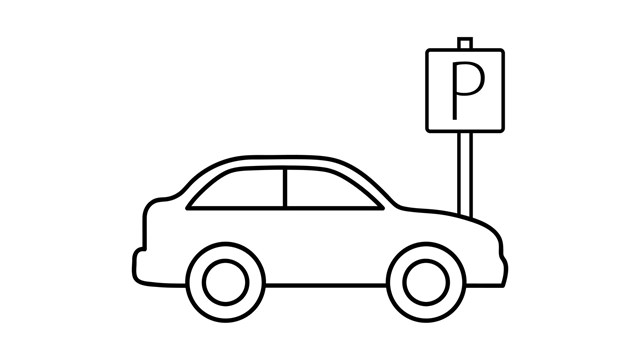The past year has seen a lot of changes in the codes governing New York City's buildings, both inside and out. Rules covering lead paint, carbon monoxide detection, and construction permits have been introduced or revised, and it's up to board members, property managers, and individual shareholder/ owners to take responsibility and educate themselves about the changes.
Thousands of people working for the city's various governmental agencies make it their business to know and enforce all the rules and regulations, the changes, and the addenda to New York's building codes. The two main agencies of concern to New York City developers, contractors, managers, and boards are probably the Department of Buildings (DOB) and the Department of Housing Preservation and Development (HPD). Both are large organizations that oversee hundreds of thousands of buildings, and work to clarify and enforce the laws that govern their safe operation.
"We employ about a thousand people," says Patricia Lancaster, Commissioner of the DOB. "We have jurisdiction over every one of the 950,000 buildings that comprise New York. We issue about 99,000 building permits every year, and we conduct about 350,000 inspections--so we're a little busy."
The other main government agency, the HPD, has a few fewer buildings under its governance, though the organization is just as vital to the fabric of New York City life as the DOB. Harold Shultz, special counsel to the HPD commissioner, puts it this way: "The DOB is responsible for making sure that all buildings in the city is constructed properly, and that those structures and major subsystems are properly maintained. The HPD, on the other hand, is basically responsible for the 590,000 or so residential buildings, to make sure they are being properly operated and maintained pursuant to the plans that were filed and approved by the DOB. DOB makes sure that every residential structure built has a boiler in it or some form of heating--but it's my responsibility to make sure that the boiler gets turned on when it gets cold outside."
Both agencies have been particularly busy this year, getting the word out and educating shareholders, owners, board members, and property managers about changes to several of the local laws and ordinances governing multi-family housing here in the city. Ignorance of updated laws is no excuse when the inspector pulls out his citation book, so having the latest information at hand is vital to any responsible board-management team. To help out with this monumental task, the DOB has been taking major steps toward streamlining the way it processes business--among them the improvement of the department's website, www.nyc.gov/buildings, where you can find certificates of occupancy for nearly every one of the city's 950,000 buildings and get all kinds of information on codes, code changes, fine schedules, and inspections.
One of the issues of particular concern to the DOB and the HPD is façade repair and maintenance. Oftentimes unfortunate pedestrians are injured--and sometimes even killed--by pieces of masonry falling off multi-story buildings in the city. The issue of façade inspection and maintenance was addressed in a piece of local legislation back in about 1980. That standard was called Local Law 10, but the new version--updated as Local Law 11 and passed in 1998--goes a few steps further to insure that façade-related injuries and fatalities are for the most part a thing of the past.
According to Lancaster, "Local Law 11 covers all buildings over six stories and demands that you inspect your facades. The law goes back to the early '80s when someone got hit by a brick that fell from a façade in bad repair. Now, all facades over six stories must be inspected every five years. The filing started for Cycle 6 on February 21st, and you are encouraged to get a licensed, professional architect or engineer to file the report for your building--in fact, you have to. The rules and the way to file are all on the DOB website."
"Let me also point out to you one change from the last cycle," Lancaster adds. "Now, all buildings that were filed during the last cycle under what we call the Safe with a Repair and Maintenance Program or SWARMP--those repairs must be done before this next cycle, or the building will be re-filed as Unsafe. And trust me, you don't want your building filed as Unsafe."
Essentially, this means that if a building has not made the necessary repairs outlined on their last inspection report five years ago, or has not re-filed a new report clearing the violations by February 21 of 2007, that building will automatically be declared Unsafe--even if the violation cited on the last inspection report was a hairline crack.
"Let's just be clear," says Lancaster. "You have until February 21, 2007 to file the new report. After that time, if you have not filed a Safe report, we'll classify your building as Unsafe."
Another of the big changes this past year involves the perennial issue of lead paint. Every year, hundreds of children in New York City are made sick by ingesting or breathing paint debris contaminated with lead. To combat the problem, the city and state have passed a new set of measures to control how paint debris is cleaned, handled, and disposed of--which as a whole are referred to as Local Law 1.
Says Shultz, "The new lead law--Local Law 1 of 2004--is the new comprehensive law on lead paint in New York City housing. If you remember Local Law 38 and you remember the old Local Law 1, forget them--this law replaces both of those laws. It went into effect on August 2, 2004 and has been in compliance and enforcement by the department, our department since that date."
According to Shultz, an owner's responsibilities under Local Law 1 are to remediate lead hazards, to notify tenants and investigate the existence of possible lead hazards, correct any lead hazards that are found using safe work practices, make apartments lead-safe on turnover, and do all repairs and renovations using safe work practices.
"In terms of remediating lead hazards," says Shultz, "owners are required to prevent the reasonably foreseeable occurrence of lead hazards and remediate them and the underlying defects that may cause lead hazards. Now, that's not a responsibility that comes from an inspection by one of my inspectors. That is a responsibility that all owners have, and is enforced by tort action. So if you have not reasonably foreseen a possible lead hazard, you're exposed to a lawsuit if a child becomes lead poisoned as a result. Local Law 1 has now set this as a standard for your responsibility."
But if an owner's responsibility is to correct any lead hazard, what exactly constitutes a lead hazard in the first place? According to Shultz, it's any peeling lead-based paint, (and in a pre-1960 building, paint is always presumed to be lead-based) deteriorated subsurfaces, friction surfaces, impact surfaces and chewable surfaces. A friction-surface is a lead-painted surface that abrades, scrapes, or binds--like a window casing that goes up or down, for example.
"If there are two lead-painted surfaces and they scrape against each other," says Shultz, "that's a friction surface. A chewable surface is anything that protrudes which a child might chew--but in NYC, every windowsill is considered a lead hazard whether it's been chewed or not. Since August 2004, all intact windowsills have been either removed or covered with a mandatory encapsulating surface--and if you haven't done either, you're in violation of Local Law 1."
In the case of buildings built after 1960, the requirements are somewhat different, says Shultz.
"Buildings built after 1960 in the city of New York have two requirements. If your building was built between 1960 and 1978, and you've done testing and know for certain that there is lead paint in the building someplace--which isn't at all unusual in areas like metal window frames or metal stairwell stringers--then Local Law 1 also applies to your building."
That aside, says Shultz, there are a few exceptions and exemptions to be taken into consideration. "There is the so-called co-op/condo exception--and I stress the words 'so-called' exception," says Shultz. "You have to understand the responsibilities under Local Law 1 before you can discuss how much exception co-ops and condos actually get under the law."
In the case of newer buildings, or old buildings that have been gut-renovated and then thoroughly inspected for lead, Shultz says it's not an automatic exemption from Local Law 1 requirements. "To get an exemption," says Shultz, "you have to have an EPA-certified lead inspector come in and do a thorough inspection of the building--even if you suspect that it's likely that you don't have lead paint in the apartments. You can apply for a unit-only exemption or units-only exemptions and the inspector will do that kind of testing and choose not to seek an exemption in the common areas if you want to do that."
Also, cautions Shultz, "Let it not be forgotten that federal Title 10 lead paint requirements apply to every building built prior to 1978 – and there are also notification requirements set forth by the Environmental Protection Agency (EPA), that state whenever any repair is being done in an apartment with a child, the repair person must provide a lead safety booklet to the occupant of the apartment."
And therein lies the rub for older co-op and condo buildings, says Shultz. According to the new statute, if a repair needs to be done in your unit that involves an area bigger than 2-x-2 feet, and your apartment or any other apartment affected by your repair is home to a child under seven years of age, it's not enough to just bring your building super in to do the work--you're legally required to hire a contractor trained in lead paint issues to do the repair.
Well-meaning as the law is, not everybody is thrilled about this, according to Robert Grant, director of management for Manhattan's Midboro Management. New regulations often mean more work for managers and boards, and can mean more capital outlay to contain and remediate lead hazards in the course of renovations, improvement projects, or repairs. More diligence needed on the part of managers could drive management fees up and cost buildings in the long run, says Grant, and having to hire specifically-trained contractors to handle any sort of job that could result in lead paint hazards will inevitably cost more as well.
"I'm not happy that the burden on management companies may lead to the increase of management fees to compensate for what we're going to have to go through as the reality of this law really kicks in," says Grant, "and as we really start thinking about which electrical contractors and plumbers are certified to touch painted surfaces. You can't even imagine how this is going to phase in yet."
Along with Local Law 1 comes other related rules involving the kinds of authorization needed to carry out repairs and maintenance, says Lancaster.
"For example," she says, "you don't need a permit to clean and caulk masonry on your building's façade, but you do need a permit if you're performing stone or terra cotta restoration. You don't need a permit to do repointing, but you do need a permit to install a new parapet guardrail. It's maintenance-versus-construction that's really the issue there."
To make it easier--and quicker--to get answers to these kinds of questions, Lancaster says the DOB has posted what's called their 'Technical Policy and Procedure Notice' on the department's website. Anyone can access it, and it's free.
"Another thing that we're doing is enacting a whole new building code for the city of New York," Lancaster continues. "It's called the Model Code Program, and it will make the code easier and simpler, and more efficient to use. The first bill will go to the city council in May 2005, and until that bill goes into effect, you'll be required to use the old code--the one enacted in 1968, not the old-old code from 1938."
The building code under which the city operates now requires that if a construction project underway is valued in excess of 60 percent of the building's value, then the entire building must be brought up to code.
"That's a big, bellwether watershed amount," says Lancaster, "Certainly most projects probably only involve repairs to an existing building, and don't mean the whole thing must be brought up to code--it's grandfathered in. Your building's licensed professionals can help you determine if your repair project qualifies the entire building."
There are also new regulations in the code addressing the ever-growing trend toward home offices. According to the DOB, a home office "cannot occupy more than 25 percent of the unit's area, nor be more than 500 square feet."
"That's just part of it," says Lancaster. "The other part of it is that a home office can be something like a fine arts studio, or a music teacher's space--but it cannot be a beauty shop, an interior decorator's office, a real estate, insurance, or stock brokerage, for example. That's all spelled out in the code."
According to Lancaster, "The carbon monoxide detection law--Local Law 7 of 2004--was promulgated by the City Council and required that owners act very quickly to get carbon monoxide monitors installed in each dwelling unit, and within 50 feet of each sleeping unit. The law, (Ed. note-- which went into effect in November 2004, but is subject to a time extension until June 30, 2005), is one that caused us a great deal of consternation, since it went into effect so quickly, but I will say that in the approximately three years I've been in office, we've had a lot of CO-related deaths--so it's a good thing to have these $25 monitors installed."
And there's more to it than just tossing each building resident a new CO detector and telling them to install it, according to Lucas Ferrara, an attorney with the Manhattan law firm of Finkelstein Newman LLP.
"When you have a carbon monoxide detector," says Ferrara, "you may not be required to repair or replace it--as long as you've provided it, you've fulfilled your obligation under the law. It's not technically your responsibility if the resident or tenant breaks the detector, or obstructs it, or uses it improperly."
"But if you know there's a problem with the building's boiler--or if you know that there've been smells and odors emanating from the basement and you do absolutely nothing, no judge in the world is going to say 'you're OK' because you just provided the detector. It doesn't work that way."
Shultz agrees, adding that, "After the first initial certification [of CO detector installation], while the tenant is in occupancy, the tenant is required to maintain the smoke detector. On the turnover, when you have a new apartment, the owner is required to provide a new carbon monoxide detector. There's no re-certification required. The only certification requirement is on the initial installation."
When it comes to building codes, new rules, and who's supposed to take responsibility for compliance with the rules, there's often some confusion between sponsors, owners, shareholders, tenants, and landlords, says Ferrara.
"What a lot of co-op owners tend to forget is that they're really tenants. Yes, they own shares in a cooperative and they own their unit, but they're also tenants under leases, and the responsibility for the building falls on the cooperative. Keep in mind that landlord-tenant law--the rights and responsibilities that you have as owners--is a pie. So look at this pie as rights and responsibilities and ask, where do these obligations come from? Just because something is not spelled out in the law doesn't mean you're exempt from responsibility for it."
Just because a lead paint or façade maintenance statute doesn't apply to you doesn't mean you're safe," Ferrara continues. "There's something called negligence, and there's something called duty--and there's responsibility. And these responsibilities come into being in one of three ways: By statute--when administrative agencies, legislatures, the city council, sit in a room and decide we're going to pass a law. That's one way. By contract--you enter into an agreement, whether it's with a co-op when you buy your shares or when you enter into any kind of contract and you create duties and assume certain rights and responsibilities that way."
"The last way is what's called common law," says Ferrara. "For hundreds and hundreds of years, there have been cases that have been decided by judges that we as people that live in multiple dwellings are required to comply with. So just because you may hear or believe you're exempt under a statute doesn't mean you don't have some responsibility, or that your co-op doesn't have responsibility to you under common law."
Of course, it would be nearly impossible for a board or single managing agent to keep tabs on every piece of new legislation, every precedent-setting judicial case, and every city council hearing that comes down the pike. So how can boards and managers stay abreast of the most important legal issues affecting them and their buildings?
To start with, says Shultz, "The HPD does offer classes for operations and maintenance of buildings, and some of these kinds of legal issues are covered. I don't think any of those classes are co-op specific training, but the general owner training deals with a lot of the problems that co-op and condo boards deal with regularly. You can get information on the HPD website. Another good source of educational information is the Council of New York Housing Cooperatives and Condominiums (CNYC)."
According to Grant, complying with the city codes and regulations is not something that a board or a managing agent should have to tackle solo. Team effort and diligence is the key to avoiding fines and other headaches.
"Sometimes there's overlapping between the various city agencies, or maybe confusion as to which agency is responsible for promulgating rules or enforcing them. The role of the managing agent is to constantly be aware of the changing codes, help educate the boards, and make sure staff and building is trained," says Grant. "Learn when to comply, how to comply. There are regular inspections that have to be done annually and in a cycle. Management has to be aware of that, do budget forecasting, and preventative maintenance. That's our role."
And, says Ferrara, don't necessarily view new changes and requirements as bad news. "Believe it or not, the codes are standards that our legislature has decided are in our interests to protect," he says, "and not only us, but those who live with us. Yes, these are added layers, but these are layers we should work with if we're concerned about those that we love--and if we don't love them, at least we want to preserve our profits because we're making money from them. So look at it in that way."
Information and quotes for this article were drawn from seminars presented at The Cooperator's annual Co-op and Condo Expo, which took place at the New York Hilton on March 16, 2004. Tapes of the day's seminars (including the one used for this piece) are available for purchase through The Cooperator's website, www.cooperator.com or by calling 212-683-5700 x368. The Cooperator is busily preparing for the 2006 Expo, which will take also take place on March 16.







Leave a Comment